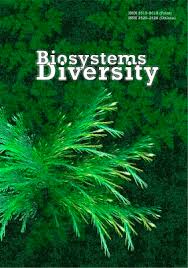Climatogenic reaction of Robinia pseudoacacia and Pinus sylvestris within Northern Steppe of Ukraine
Climatogenic reaction of Robinia pseudoacacia and Pinus sylvestris within Northern Steppe of Ukraine
Author(s): Y. Gritsan, S. A. Sytnyk, V. M. Lovynska, I.I. TkalichSubject(s): Environmental Geography, Evaluation research, Environmental interactions
Published by: Дніпропетровський національний університет імені Олеся Гончара
Keywords: correlation analysis; radial increment; black locust; Scots pine; steppe zone;
Summary/Abstract: Climatic changes in the environment are becoming more noticeable each year. Nonetheless, trends in the reaction of radial growth of forest trees to climate change should be studied in different climatic regions due to significant local variability in climatic conditions which are specific for any particular area. We conducted a correlation analysis of the relationship between the parameters of radial increment of black locust (Robinia pseudoacacia L.) and Scots pine (Pinus sylvestris L.) and meteorological factors of the environment in forest areas located in the northern steppe zone of Ukraine. We performed surveys in plantations of black locust, growing in hill slope and interfluve areas and also in sandy terrace plots of Scots pine. Over the period of intense vegetatative growth, black locust requires moisture 50% higher than the norm, and Scots pine 43% higher than the norm. It was determined that maximum increment for the studied plants occurred under the influence of a combination of factors involving reduction of the air temperature by 2.6–2.7 °С below the norm for black locust and by 2.3–2.5 °С for Scots pine. During the period of lower vegetative activity, Scots pine demonstrated lower sensitivity compared to black locust.
Journal: Biosystems Diversity
- Issue Year: 27/2019
- Issue No: 1
- Page Range: 16-20
- Page Count: 5
- Language: English

